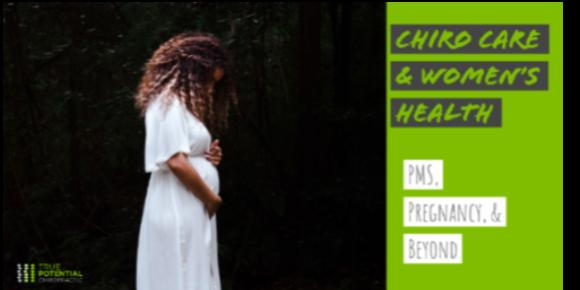
PMS, Pregnancy & Beyond
Women's health and wellbeing are inextricably linked with our pelvic floor. From puberty to PMS, the female body processes monthly and momentous events – hormonally and physically – radiating from the pelvic and lower spinal region. Pelvic pain (known as pelvic disfunction in the medical community) is a common ailment that affects women of all ages. It can be relatively mild and annoying, like period cramps or severe and debilitating resulting from pregnancy and childbirth. The most severe pelvic dysfunction can limit your enjoyment of life, affecting your ability to walk, stand, and lift heavy objects.
Pelvic pain is a real pain in your who-ha
Symptoms of pelvic pain can include shooting pain in the pubic area (radiating to the abdomen, lower back, and upper legs), pain when moving, impaired walking and running, and swelling. Left untreated, pelvic disfunction can stop you from living your life to your fullest. You may be experiencing pelvic dysfunction if you have any of the following complaints:
- Pelvic pain
- Pain or weakness post-abdominal surgery
- Postpartum scaring
- Post-baby pelvic floor muscle evaluation and core strengthening programs
- Low back, pelvis and hip pain during pregnancy
- Leaking urine when you cough, sneeze, run, jump, or lift heavy objects
- Pain during intercourse
- Organ prolapse condition with your bladder, uterus or rectum
The pelvic floor is like a sheet of muscles stretching from your tailbone to your pubic bone. The muscles that make up the pelvic floor help to keep the organs like your bladder, bowels, and uterus in place. Pain happens when these muscles become too tight, stretched out, or are too weak to do their job effectively.
The most significant impact on the pelvic floor muscles occurs during pregnancy. While there is always some healing involved after carrying that extra weight and giving birth (natural and cesarean), your pelvic region should not suffer from lasting pain and dysfunction.
Pain-free pregnancy
According to the American Pregnancy Association, chiropractic care can help maintain an overall healthier pregnancy and even prevent cesarean deliveries. Chiropractic care during your pregnancy supports building a resilient body before baby, including heading off potential damage and misalignment your lower body during birth. There is some evidence that chiropractic care during pregnancy can also reduce the likelihood of miscarriage, control morning sickness, and even lower your risk of pre-term delivery.
Chiropractic care appears to offer many women relief from the back, leg, and pelvic aches and pains common during pregnancy. Proper spinal and pelvic alignment can help some women avoid these common pregnancy complaints:
- Nausea
- Sleeplessness
- Lower back pain
- Pelvic pain
- Back, neck or joint pain
- Prolonged labor and delivery times
- Cesarean delivery
Chiropractic care is a safe, effective, and drug-free way to manage these and other musculoskeletal symptoms during pregnancy.
Post-birth rehabilitation
During your pregnancy, your body increases the production of ligament and joint-loosening hormones like Relaxin to help ease the way for baby's birth. Those hormones, combined with the additional weight and pressures put on your spine and pelvic floor, lower your center of gravity, leave you feeling "loose-limbed," and can cause a sway-back and clumsiness. The ligaments are destabilized and allow the joints to move and separate. The changes in your pelvic biomechanics can bring discomfort walking, sleeping, and eventually nursing.
A regular and comprehensive chiropractic treatment plan after delivery can promote healing, reduce pain and inflammation, and help the body calm down after the birth experience. Ongoing care can also lighten the symptoms of middle back pain in postnatal mothers related to breastfeeding, bottle feeding, and rocking babies to sleep – not to mention lugging around those heavy car seats.
Lifelong PMS and menopausal support
Most women suffer some symptoms of PMS during their childbearing years. Symptoms can include cramps, bloating to mood swings, with some experiencing even severe or debilitating pain. PMS tends to worsen when women reach their mid-30s and 40s, giving way to the additional complaints of menopause – hot flashes, irregular periods, and exacerbating mood swings.
PMS symptoms like cramps are often related to spinal subluxation. Chiropractic care can help. Study results showed that PMS symptom scores significantly decreased after chiropractic manipulation, including less bloating, headaches, cravings, and cramping while under chiropractic care.
Chiropractic care provides a drug-free alternative to pain relief for women during all phases of their reproductive cycle. The central nervous system controls every function of the body. The spine regulates your nervous system, which communicates with every other part of the body, including your reproductive organs and hormones. If there are pressures on your spine or pelvic floor, those could be interfering with the communication in your nerves or hormones, making PMS, pregnancy, or menopausal symptoms more severe.
At TPC, we treat women through all stages of pregnancy and postpartum rehabilitation. Even if you aren't pregnant, there is no reason to suffer from the life-impacting pain of pelvic dysfunction. Give us a call today and start on your path to living your life to its true potential. (503) 574-4872

